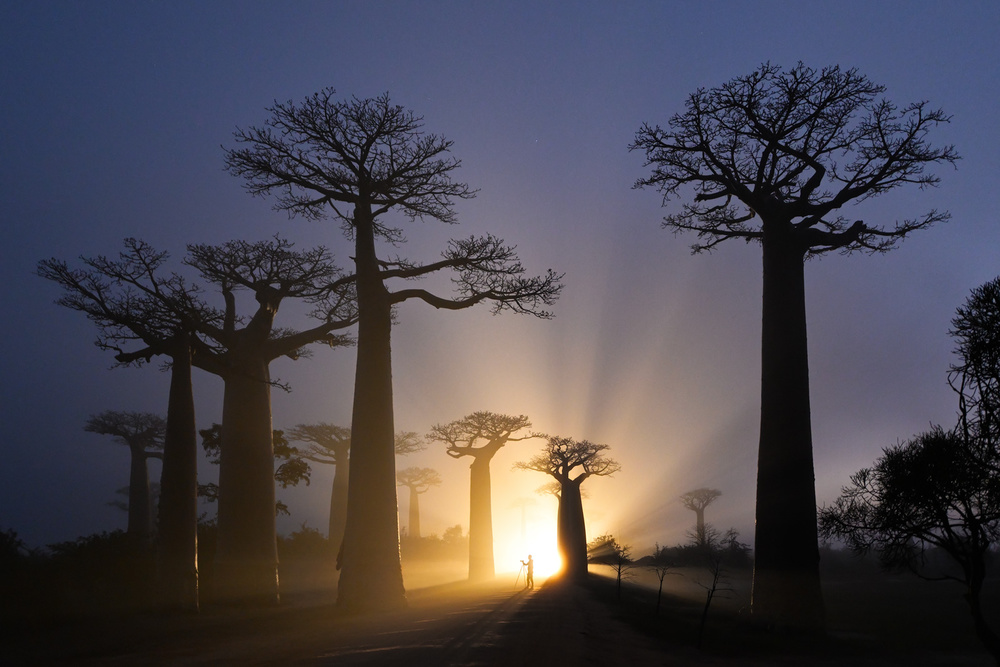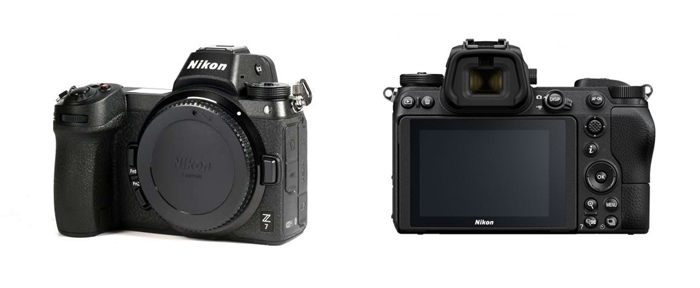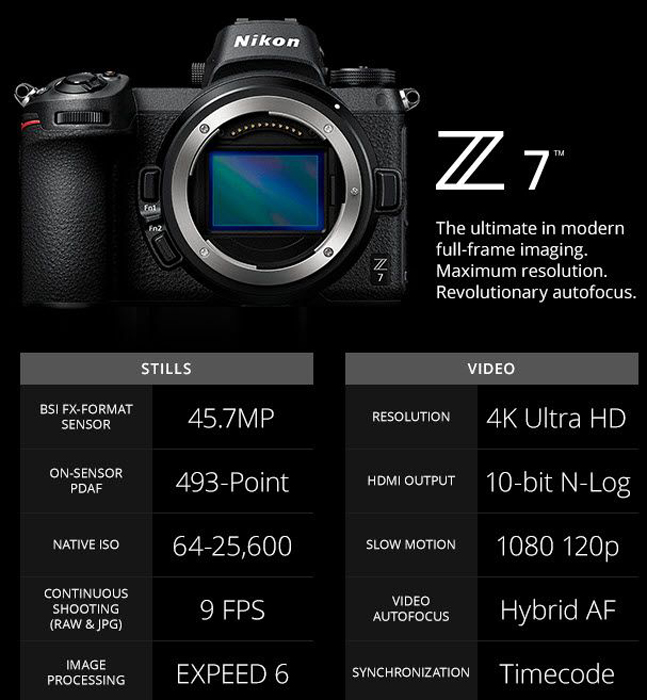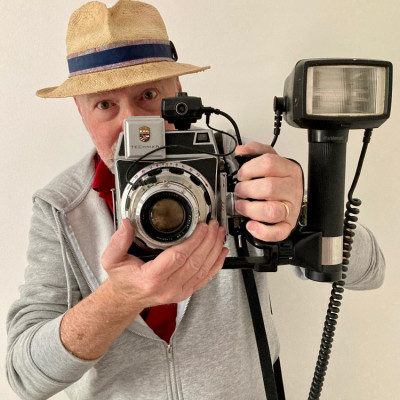SEARCH






|
|
|
|


by Editor Peter Walmsley

Nikon Z7 Campaign – Photo by Marsel van Oosten
1x isn’t normally a forum for equipment reviews, but equipment is such a major part of our craft that advances in the technology can have a significant impact on what we can produce and how we go about it.
This article describes my experience in moving from a conventional DSLR (the Nikon D800) to
Nikon’s new high-resolution mirrorless camera, the Z7.
It got some numbers in it but I’ll try to keep them to a minimum.

My main type of photography is foreign travel, particularly street photography and cityscapes/landscapes. That means taking the equipment on many aircraft in large backpacks and forever watching the weight limit.
The principal selling point of mirrorless is the prospect of reducing the size and weight, but I’ll say right up front, that this advantage has not been realised. Sure the body is smaller and lighter but with a walkabout telephoto lens, the weight reduction is a mere 100g.
To be fair, I usually used an f4, 24-120mm lens on my D800. And with the Z7, I decided to trade-up from the f4 lens to an f2.8, 24-70mm lens which is heavier, so I’m not strictly comparing apples and apples, but that was my configuration. The lens is great by the way – though it should be for the price and I do miss the extra 50mm reach of my old one and end up swapping lenses more frequently.
For those not aware, the new Nikon range achieves its size and weight reduction by reducing the lens-to-sensor distance and compensates for the fact that the light doesn’t have room to spread out as much by increasing the lens diameter to an 82mm filter size compared with 77mm. Previous format Nikon lenses retain their functionality (apart from older designs) by use of an adapter which moves the lens further away from the camera again. So, although not large, it is an extra bit of kit to carry.
WHAT ABOUT PERFORMANCE?
WELL, FIRST THE GOOD.
The noise performance compared with my older Nikon is excellent.
I would previously never shoot above ISO1600 and for anything of good quality, 800 was my target limit. With the Z7, I recently shot a seascape in near darkness at ISO5200 and noise was barely discernable. Obviously noise improvement is more a function of sensor and processing advances than being mirrorless, but nevertheless, it’s the package we’re comparing.
The Z7 also has 3-axis stabilization built into the body compared with the previous 2-axis, lens-based system.
Again, the results are remarkable. I can now regularly shoot hand-held at 1/3s with the 24-70mm lens. For low-light street photography, together with the extra stop on the f2.8 lens, this is a game-changer. For example, night market success rates have improved dramatically, and all of those locations that ban tripods now become accessible.
Some of the other benefits of the Z7 include a tilting screen.
Yes, many other cameras have had these for a while but for me, the ability to get down to ground level without lying on the stomach or shoot above people’s heads without guessing is a revelation. The former actually makes you much less conspicuous which for street photography is a distinct advantage.
Static focus is also good .
There is a pin-point focus option on the Z7 which gives a much smaller point of focus although this is feature is somewhat negated by the fact that it takes longer to move the point across the screen with the multi-selector or joystick controls. Most of the time I therefore keep to the normal sized focus point which also now works across the whole screen. Oh, and the ability to shoot silently is great!

ON THE NOT-SO-POSITIVE SIDE
I do recognize that this is as much a journey for me of getting used to the new way of working)
The biggest disappointment is the (static) focus lock-on whilst moving (both me and/or the subject).
Pointing at a subject through a moving car window seems to result in a focus on the background, not the subject which didn’t happen as often with the D800. It’s as if there’s a lag in the lock-on and I still need to get to the bottom of it. Anyone with a better understanding, please comment on this article. Equally there’s a start-up lag after the camera has gone to sleep to save battery power so you have to anticipate your next shot and re-awaken the camera in advance. It’s just not as spontaneous.
To Nikon’s credit they have retained a number of physical buttons to press rather than bury controls in layers of software menus and most of these buttons are programmable, including the lens ring. But being a smaller body, these buttons are smaller.
Again, to be fair I have a rubber case on the camera which doesn’t help with ‘feel’ but the 4 closely grouped buttons bottom right controlling menu, release mode, and +/- zoom on playback are particularly difficult to differentiate, especially in the dark. The controls are now mainly set in software menus and pressing the ‘i’ button brings up those controls which are selected with a dab of the finger on the touch-screen, if not otherwise assigned to a physical button. For example, if you want a set of brackets shots, you go into the bracketing menu and set up the exposure interval and number of shots in software and then when you’ve finished you have to go in again and turn it off. Yes, it maybe ‘just different’ but it takes some getting used to and it’s slower.
The function groupings in the software menus themselves are not always obvious but then they weren’t on the D800 either.
On the top of the smaller body is a small LCD screen which Nikon calls its ‘control panel’ and this displays the main settings. But it is itself small, is particularly difficult to see in bright sunlight, attracts dirt and there appear to be no protectors available for it.
Equally, compared with the D800 the Z7 has acquired a new remote-control socket (for cable releases) which is extremely fiddly to connect to, especially in the dark when you are most likely to use it.
Mention should also be made of the viewfinder.
It goes without saying that one needs to get used to an electronic display as opposed to an optical image and the Z7 provides options to use either the screen on the back or to look through the viewfinder with option to select priority. Raising the camera to the eye turns the viewfinder display on and the back screen off so that you can treat it like an SLR and this works well most of the time. However the sensor which detects the presence of the eye is particularly sensitive and waving your hand near the back of the camera can trigger it (annoyingly when you are trying to looking at the back screen) or a small amount of foreign material lodged around the edge of the viewfinder can cause triggering.
WITH A LIST OF POSITIVES AND NEGATIVES, WHAT’s THE OVERALL CONCLUSION?
Well, its not a clear-cut ‘must do’ trade up but I think on balance I’m happy to have bought it.
- The low noise and image stabilization mean that I can take pictures which were otherwise impossible.
- If I can crack the static focus lock-on I’ll be satisfied.
- The rest of the issues can be tolerated or addressed and much of it is down to the learning curve.
 | Write |
 | Peter Davidson CREW Good piece Peter! As a life long Nikon man I've been wondering if I should join this party or not and your views have been a great influence. You have all but convinced me to jump ship, and to a surprising port. M4/3 Olympus... |
 | Peter Walmsley Oh - what has swung you that way Peter? I have a friend who has just gone for the new Olympus too. |